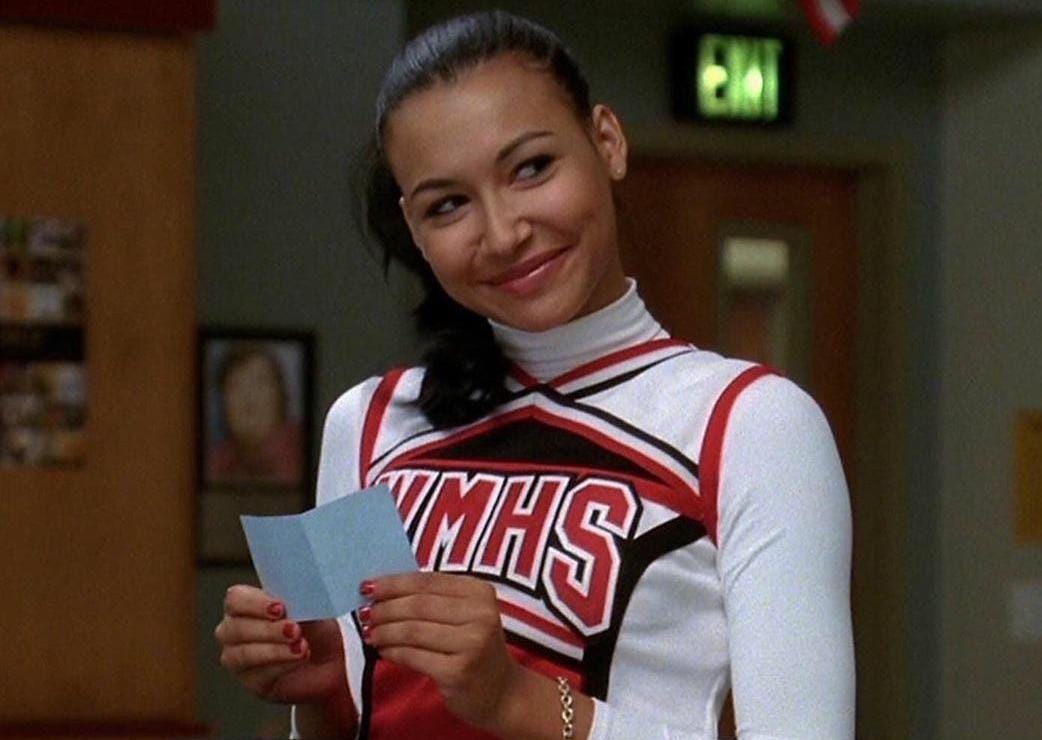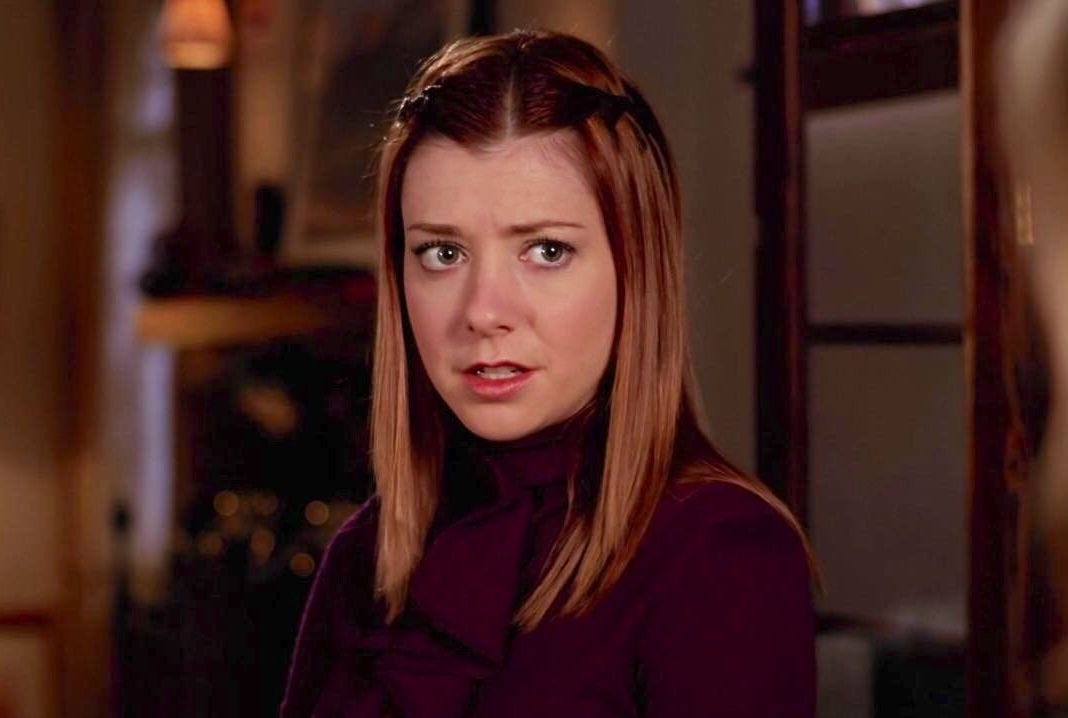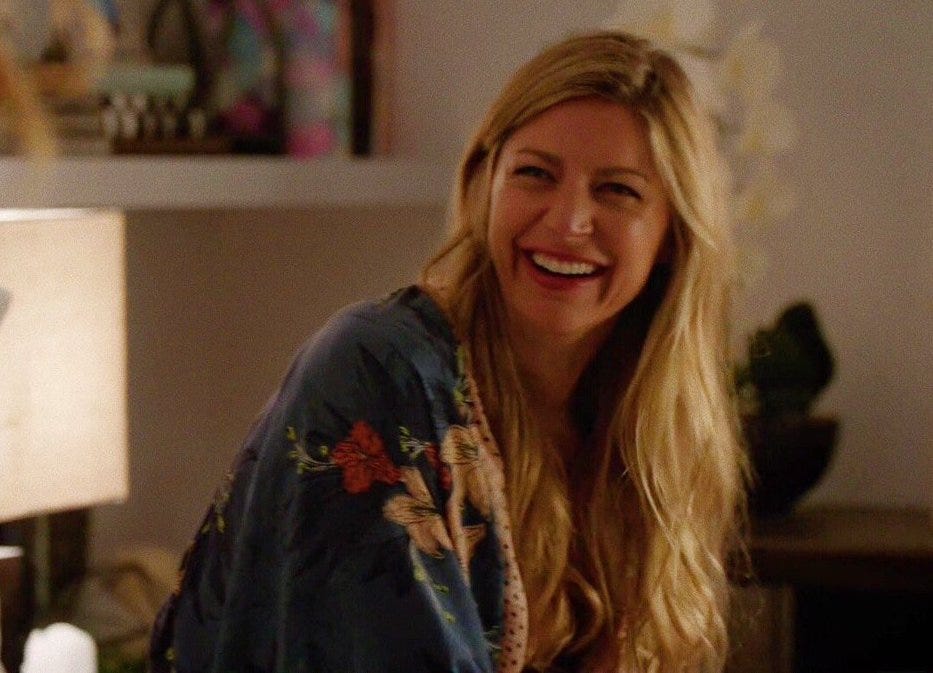All of the Girls You Loved Before: The True Impact of Fictional Characters
Let me tell you about my favorite lesbians on television!
Throughout the month of June, I’ve decided to write exclusively about queer topics here on no, but listen. In light of Pride Month and the rise of the lesbian pop renaissance, I’ve been reflecting on sapphic media even more than usual. With that in mind, I thought it would be fun to do a roundup of my favorite lesbian characters on television. Of course, there are plenty of other sapphic characters that I could go on and on about,1 but for this article I wanted to focus on those who have either expressed an exclusive attraction to women or identified as lesbians, because that is often a rare feat in itself. Instead of just providing a surface-level list of characters (which is at the end), I’ve chosen a few that have significantly impacted me and highlighted why. If you’re like me and you pretty much only watch shows with queer major characters, maybe you’ll share or relate to my passion for these stories.
Santana Lopez
Glee is a show that will be referenced, quoted, and remembered for years to come for many reasons—a lot of them messy and unhinged—but one that is a testament to the show’s success is Santana’s character and storylines.2 Going from a dubbed-over peripheral high school cheerleader in the first few episodes to a core character in the later seasons, she quickly won over audiences with her iconic snark and vocal prowess. In fact, watching all of Santana’s solos on YouTube is what convinced me to watch the show in the first place. Glee devoted well-deserved attention to her storylines as she came to terms with her sexuality and her romantic feelings for Brittany, her best friend. It was a sign of the times (2011) that the school’s head cheerleader being a lesbian was considered a newsworthy scandal when Santana was publicly outed during Sue’s congressional election campaign. Although this was a tumultuous time for her, the character quickly regained her confidence, throwing snide remarks at everyone she felt she was better than.
This was something the writers did really well—rather than attributing Santana’s nastiness to the inner torment of being closeted, throughout the show, she remains the mean girl who does actually care (deep down) but isn’t afraid to tell it like it is and point out people’s flaws.3 In my opinion, the key to great lesbian representation, and great characters in general, is ensuring that they are complex, well-rounded people whose storylines extend beyond their identities or romantic relationships.4 Glee is so self-aware that Santana even ridicules this notion: after she sings “If I Can’t Have You,” Will applauds her declaration of love and misunderstands the performance as a dedication to fighting for marriage equality, but she corrects him and explains that she just wants to be famous. At the end of the day, she is still an egotistical teenager with big dreams like the rest of the Glee Club. Moreover, Glee didn’t shy away from using the word “lesbian," which was especially noteworthy for the early 2010s, considering that shows so often skirt around labels or seem to avoid that word in particular. Most importantly, Santana got a happy ending on the show and will hold the legacy of lesbian representation for my generation and those to come; Santana, you will always be famous.
Willow Rosenberg
Buffy the Vampire Slayer aired from 1997 to 2003 and had a massive impact on fans and pop culture, with its monster-of-the-week format, musical episode, and female-centric supernatural storytelling. Among its accomplishments was the portrayal of Willow and Tara in the first long-term sapphic relationship between lead characters on network television.5 Although I watched the show years after it came out, Willow and her storyline meant a lot to me and are still unique among shows that have been as widely watched and long-running as Buffy. To have a main character discover that she is a lesbian, and for that to receive little backlash within the world of the show at the turn of the twenty-first century, was groundbreaking representation for a barren media landscape with just sprinkles of queer tokenization. Nevertheless, this goal was secondary to simply adding to Willow’s character and depicting her and Tara’s love story.
After expressing interest in and dating boys in high school, Willow meets Tara at university, where the two quickly bond over their affinity for witchcraft and become close friends. Their relationship eventually turns romantic, and Willow starts identifying as a lesbian—her interest in men can thus be attributed to compulsory heterosexuality, which is a relatable experience for many lesbians (myself included). The network’s concerns about the public reception of the relationship between Willow and Tara limited what they could depict. In contrast to the other couples on the show, their first on-screen kiss was in “The Body,” 28 episodes after Tara was introduced. Because of these initial restrictions, magic and witchcraft doubled as symbols of physical affection between Willow and Tara. A wonderful result of this creative loophole is that lesbianism is a source of power and is, quite literally, magical within the Buffyverse. Willow’s evolution throughout the show from a quiet, shy girl to a confident woman who is even more powerful than Buffy, her superhuman vampire-slaying best friend, cements her status as one of the first lesbian icons on television.
Ava Sharpe
Maybe I’m biased because I’ve been rewatching Legends of Tomorrow, but Ava Sharpe might just be my favorite lesbian character on television. Unlike Glee and Buffy, the show never dwells on Ava’s sexuality as a storyline. This is partly because she’s already confident in this aspect of her identity when we meet her, but also because the show is more recent—it ended in 2022. While coming out narratives are diverse and important, it’s great to see queer characters who are written independent of this phenomenon. Ava is introduced in season three as an antagonistic agent at the Time Bureau, an institution seeking to police Captain Sara Lance and the Legends, the found-family rag-tag group of time travellers at the center of the show. This leads to an exquisite enemies-to-lovers-to-wives arc between Sara and Ava, who ultimately become co-captains of their timeship.
During Ava’s first season on the show, she discovers that she is a clone from the future who has been programmed to do her job and been given fake memories—essentially, she finds out that her life has been a lie. Understandably, this sends her into an identity crisis. What I love about this aspect of her character is that it not only provides a lot of sci-fi story potential, but also makes a point to give her this source of personal distress that has nothing to do with her sexuality. On top of that, the fact that Ava was designed to be “the perfect woman” and she’s a lesbian is a pretty spectacular message. Clone lore aside, I have such a soft spot for Ava because I really see myself in her personality and relate to her.6 As a stubborn, rule-following perfectionist, I especially identify with the scene where she and Sara are trying to assemble a closet in her fake-IKEA purgatory7 and it falls apart because Sara has improvised, so Ava tells her: “What a surprise, you followed none of the instructions and it didn’t work.” The whole point of Ava’s character is that her humanity is defined not by her origins but by her relationships with other people and the world around her: she is funny and bossy and loving and serious and nerdy and insecure and tenacious. Her character made me identify comfortably and positively with being a lesbian, to a degree that few others have done, both because of her heartwarming relationship with Sara and because Legends has such a great mix of drama, comedy, and absolute camp. The show was tragically cancelled after its seventh season, but not before Sara gets pregnant with Ava’s baby, thanks to alien reproductive science, in a Utopian vision of sapphic love.
Before I sign off, I’ll leave you with a quick rundown of some more great lesbian characters, in case you haven’t seen some of these shows and would like recommendations. Keep in mind, these are only from shows that I’ve seen—if you have your own favorite lesbian characters that I haven’t mentioned, please leave them in the comments!
Elena Alvarez: The reboot of One Day at a Time brought us many great things, including Rita Moreno playing the grandmother of a teen activist lesbian who finds love.
Robin Buckley: Stranger Things pulled out all the stops when they made the emotional coming out scene between Robin and her best friend, Steve.
Fiona Coyne + Zoë Rivas: Degrassi has not one, but two popular girls who realize they’re lesbians (these characters appear in different seasons)!
Alex Danvers: Supergirl didn’t just give the world one of the most infamous cases of queerbaiting, it also features Supergirl’s canonical lesbian sister who has her gay awakening as an adult.
Clare Devlin: Everyone’s favorite wee lesbian! Even though Derry Girls is one of the funniest shows to ever exist, Clare being a lesbian is never the butt of the joke.
Emily Dickinson: Yes, she was a real person, but she’s also the main character of the fictionalized Dickinson series, writing love poems for her best friend.
Emily Fields: While the other Pretty Little Liars were actually breaking rules and laws, Emily’s biggest secret early on in the show was being a lesbian.
Laura Hollis + Carmilla Karnstein: This adaptation of Sheridan Le Fanu’s lesbian vampire novella had my high school friend group in a chokehold.
Tara Jones + Darcy Olsson: They might not be the central couple of Heartstopper, but they’re two teenage lesbians in love, and they are heartstoppingly sweet!
Kate Messner: Be warned, Everything Sucks! was cancelled after just one season, but it has a teen lesbian lead who’s in love with Sydney Sweeney’s character.
Leighton Murray: One of my greatest flexes is that I’ve been a fan of Reneé Rapp since 2019, and her portrayal of this mean lesbian in The Sex Lives of College Girls is no exception!
Cosima Niehaus: I must have a soft spot for lesbian clones, because this is another one. Orphan Black is often quite dark, but Cosima and her relationship with Delphine bring lighter moments to the show.
Bill Potts: The first main companion to be a lesbian on Doctor Who, Bill brought a refreshing levity to her friendship with the Twelfth Doctor.
Arizona Robbins: The longest-running lesbian character on network television, thanks to the longevity of Grey’s Anatomy (which I binged for the first time this year).
Like Station 19’s Maya and Carina, for instance.
Look no further than this Sporcle quiz of Santana's roast of Kurt for evidence of her cultural impact.
“I don’t mean to be a bitch... well, actually, I do.”
That said, if an exploration of those themes makes sense within the context of the show, by all means, give me a great sapphic ship! The point is just that they should also have personalities outside of those relationships.
Yes, Tara was only billed as a lead for one episode—iykyk...
I like to think that me going on about music and TV on here is my version of StabCast, Ava's podcast on serial killers, which she tries desperately to get her friends to listen to.
Mind you, this is one of the least insane circumstances to arise on this show.








Willow and Tara!!! 💞💞it’s so true how important fictional characters are: so many have impacted me as well! Great post!
Second remember when I told you if I can’t have you is my fave Santana solo and you were like wait I’m surprised!